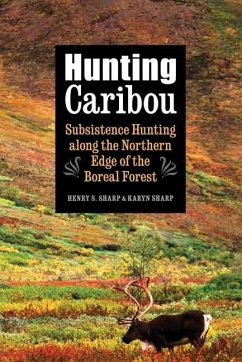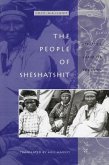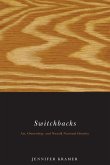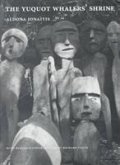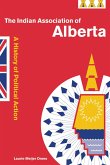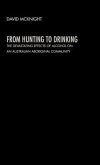Karyn Sharp, Henry S Sharp
Hunting Caribou
Subsistence Hunting Along the Northern Edge of the Boreal Forest
Karyn Sharp, Henry S Sharp
Hunting Caribou
Subsistence Hunting Along the Northern Edge of the Boreal Forest
- Gebundenes Buch
- Merkliste
- Auf die Merkliste
- Bewerten Bewerten
- Teilen
- Produkt teilen
- Produkterinnerung
- Produkterinnerung
Henry S. Sharp has been a professor at the University of Victoria and Simon Fraser University in Canada and a former scholar-in-residence at the University of Virginia and is now semi-retired. He is the author of Loon: Memory, Meaning, and Reality in a Northern Dene Community (Nebraska, 2001), winner of the Victor Turner Prize from the Society for Humanistic Anthropology, and The Transformation of Bigfoot: Maleness, Power, and Belief among the Chipewyan. Karyn Sharp is an adjunct professor in the Department of Anthropology at the University of Northern British Columbia and is a partner in…mehr
Andere Kunden interessierten sich auch für
![The People of Sheshatshit The People of Sheshatshit]() José MailhotThe People of Sheshatshit22,99 €
José MailhotThe People of Sheshatshit22,99 €![Switchbacks Switchbacks]() Jennifer KramerSwitchbacks115,99 €
Jennifer KramerSwitchbacks115,99 €![The Yuquot Whalers' Shrine The Yuquot Whalers' Shrine]() Aldona JonaitisThe Yuquot Whalers' Shrine46,99 €
Aldona JonaitisThe Yuquot Whalers' Shrine46,99 €![Finding a Way to the Heart Finding a Way to the Heart]() Finding a Way to the Heart73,99 €
Finding a Way to the Heart73,99 €![The Indian Association of Alberta The Indian Association of Alberta]() Laurie Meijer DreesThe Indian Association of Alberta109,99 €
Laurie Meijer DreesThe Indian Association of Alberta109,99 €![Recognizing Heritage Recognizing Heritage]() Thomas H GuthrieRecognizing Heritage73,99 €
Thomas H GuthrieRecognizing Heritage73,99 €![From Hunting to Drinking From Hunting to Drinking]() David McknightFrom Hunting to Drinking197,99 €
David McknightFrom Hunting to Drinking197,99 €-
-
-
Henry S. Sharp has been a professor at the University of Victoria and Simon Fraser University in Canada and a former scholar-in-residence at the University of Virginia and is now semi-retired. He is the author of Loon: Memory, Meaning, and Reality in a Northern Dene Community (Nebraska, 2001), winner of the Victor Turner Prize from the Society for Humanistic Anthropology, and The Transformation of Bigfoot: Maleness, Power, and Belief among the Chipewyan. Karyn Sharp is an adjunct professor in the Department of Anthropology at the University of Northern British Columbia and is a partner in Dancing Raven, a consulting company based in Prince George, British Columbia. Her articles have appeared in The Answer Is Still No: Voices of Resistance 2014 , WIREs: Climate Change 2012, and The Midden.
Hinweis: Dieser Artikel kann nur an eine deutsche Lieferadresse ausgeliefert werden.
Hinweis: Dieser Artikel kann nur an eine deutsche Lieferadresse ausgeliefert werden.
Produktdetails
- Produktdetails
- Verlag: Nebraska
- Seitenzahl: 344
- Erscheinungstermin: 1. Juni 2015
- Englisch
- Abmessung: 236mm x 159mm x 30mm
- Gewicht: 640g
- ISBN-13: 9780803274464
- ISBN-10: 0803274467
- Artikelnr.: 41754877
- Herstellerkennzeichnung
- Libri GmbH
- Europaallee 1
- 36244 Bad Hersfeld
- gpsr@libri.de
- Verlag: Nebraska
- Seitenzahl: 344
- Erscheinungstermin: 1. Juni 2015
- Englisch
- Abmessung: 236mm x 159mm x 30mm
- Gewicht: 640g
- ISBN-13: 9780803274464
- ISBN-10: 0803274467
- Artikelnr.: 41754877
- Herstellerkennzeichnung
- Libri GmbH
- Europaallee 1
- 36244 Bad Hersfeld
- gpsr@libri.de
Henry S. Sharp has been a professor at the University of Victoria and Simon Fraser University in Canada and a former scholar-in-residence at the University of Virginia and is now semi-retired. He is the author of Loon: Memory, Meaning, and Reality in a Northern Dene Community (Nebraska, 2001), winner of the Victor Turner Prize from the Society for Humanistic Anthropology, and The Transformation of Bigfoot: Maleness, Power, and Belief among the Chipewyan. Karyn Sharp is an adjunct professor in the Department of Anthropology at the University of Northern British Columbia and is a partner in Dancing Raven, a consulting company based in Prince George, British Columbia. Her articles have appeared in The Answer Is Still No: Voices of Resistance 2014 , WIREs: Climate Change 2012, and The Midden.
List of Illustrations
Acknowledgments
Introduction
Hunt 1. Caribou
Text 1. Hunting and Predation
Small Game. Native Mammals. Scale, Guns, and Freedom. Denésuliné
Conceptualization of Hunting. Biology of Women as Hunters. Trust. Hunting
Is the Easy Part.
Hunt 2. Moose
Text 2. Food Storage
Meat Distribution. In the Village. Food Storage in the Bush: Freezing,
Drying, Smoking, Natural Refrigeration. Protecting Dried Meat. Drying
Caribou Meat. Marrow and Boiling Bones for Grease.
Hunt 3. Caribou: Pursuit and Risk
Text 3. Persistence in Hunting
The Dangers of Moving through the Bush. Walking the Land. Dog Teams. Boats,
Opportunistic Contact in Hunting.
Hunt 4. Caribou: Waiting for Prey
Text 4. Weapons
Muskets and Rifles. Accuracy. How Weapons Technology Altered Denésuliné
Hunting. Women and Rifles. Social Changes from Changed Hunting Methods.
Pursuit Hunting and Following Wounded Game.
Hunt 5. Caribou: Walking, Kill Locations, and Spoilage
Text 5. Carrion and Scavengers
The African Model. Consequences of Human Scavenging. An Anthropological
Gender War. Eating the Dead. Snow Probes.
Hunt 6. Wolf
Text 6. Camp Formation
Pitching a Camp. Work Areas and Dog Beds. Area a Camp Occupies. Range of
Day Trips. Marking the Land. Average Area Exploited by a Camp. Human
Influence upon the Land.
Hunt 7. Moose: Hunting by Habitat
Text 7. Summer Doldrums
Inactivity. Problems with Making and Storing Dry Meat. Fish and Other
Things. Choosing a Camp Location. Scars on the Land.
Hunt 8. Caribou: Long-Distance Hunting
Text 8. Transporting Meat
Walking the Land. Storing Meat in Lakes.
Interlude 1. Land Use and the Terrain at Foxholm Lake
Hunt 9. Bear: Failed Hunt
Text 9. Looking for Game
The Use of High Ground. The Scale of Distance in Hunting. Time and
Distance.
Hunt 10. Caribou: Calves
Text 10. Hides
Characteristics of Caribou Hide and Leather. Making and Working Caribou
Hide. Time Window for Taking Caribou Hide. Parasites and Seasonality. Uses
of Caribou Hide. The Need for Hides Modifies Hunting Priorities. Hunting
the Megafauna.
Hunt 11. Jackfish
Text 11. Women’s Labor
Flexibility in the Sexual Division of Labor. Women’s Work and Social
Status. Women’s Tasks and Shared Work. Raw Materials vs. Finished Products.
The Balance of Temperaments.
Hunt 12. Bear: Stalking Prey
Text 12. Prey Choices
The Failure of Economic Analysis
Hunt 13. Missing Hunts
Text 13. Shadows of the Past
Geology, Rock, Ice, and Ground Cover. Permafrost, Drainage, and Ice Action.
Change. How Long Is the Memory of Unused Technology? Clothing. The
Generational Transmission of Knowledge.
Interlude 2. Wolves, Caribou, and Approaching Prey
Hunt 14. Caribou: Caching in the Fall
Text 14. Hunting from High Ground
Prey Selection. Hunting with Spears.
Hunt 15. Caribou: Failed Hunt
Text 15. A Puzzle
How Past Hunters Hunted the Land. Conclusion.
Selected Bibliography
Index
Acknowledgments
Introduction
Hunt 1. Caribou
Text 1. Hunting and Predation
Small Game. Native Mammals. Scale, Guns, and Freedom. Denésuliné
Conceptualization of Hunting. Biology of Women as Hunters. Trust. Hunting
Is the Easy Part.
Hunt 2. Moose
Text 2. Food Storage
Meat Distribution. In the Village. Food Storage in the Bush: Freezing,
Drying, Smoking, Natural Refrigeration. Protecting Dried Meat. Drying
Caribou Meat. Marrow and Boiling Bones for Grease.
Hunt 3. Caribou: Pursuit and Risk
Text 3. Persistence in Hunting
The Dangers of Moving through the Bush. Walking the Land. Dog Teams. Boats,
Opportunistic Contact in Hunting.
Hunt 4. Caribou: Waiting for Prey
Text 4. Weapons
Muskets and Rifles. Accuracy. How Weapons Technology Altered Denésuliné
Hunting. Women and Rifles. Social Changes from Changed Hunting Methods.
Pursuit Hunting and Following Wounded Game.
Hunt 5. Caribou: Walking, Kill Locations, and Spoilage
Text 5. Carrion and Scavengers
The African Model. Consequences of Human Scavenging. An Anthropological
Gender War. Eating the Dead. Snow Probes.
Hunt 6. Wolf
Text 6. Camp Formation
Pitching a Camp. Work Areas and Dog Beds. Area a Camp Occupies. Range of
Day Trips. Marking the Land. Average Area Exploited by a Camp. Human
Influence upon the Land.
Hunt 7. Moose: Hunting by Habitat
Text 7. Summer Doldrums
Inactivity. Problems with Making and Storing Dry Meat. Fish and Other
Things. Choosing a Camp Location. Scars on the Land.
Hunt 8. Caribou: Long-Distance Hunting
Text 8. Transporting Meat
Walking the Land. Storing Meat in Lakes.
Interlude 1. Land Use and the Terrain at Foxholm Lake
Hunt 9. Bear: Failed Hunt
Text 9. Looking for Game
The Use of High Ground. The Scale of Distance in Hunting. Time and
Distance.
Hunt 10. Caribou: Calves
Text 10. Hides
Characteristics of Caribou Hide and Leather. Making and Working Caribou
Hide. Time Window for Taking Caribou Hide. Parasites and Seasonality. Uses
of Caribou Hide. The Need for Hides Modifies Hunting Priorities. Hunting
the Megafauna.
Hunt 11. Jackfish
Text 11. Women’s Labor
Flexibility in the Sexual Division of Labor. Women’s Work and Social
Status. Women’s Tasks and Shared Work. Raw Materials vs. Finished Products.
The Balance of Temperaments.
Hunt 12. Bear: Stalking Prey
Text 12. Prey Choices
The Failure of Economic Analysis
Hunt 13. Missing Hunts
Text 13. Shadows of the Past
Geology, Rock, Ice, and Ground Cover. Permafrost, Drainage, and Ice Action.
Change. How Long Is the Memory of Unused Technology? Clothing. The
Generational Transmission of Knowledge.
Interlude 2. Wolves, Caribou, and Approaching Prey
Hunt 14. Caribou: Caching in the Fall
Text 14. Hunting from High Ground
Prey Selection. Hunting with Spears.
Hunt 15. Caribou: Failed Hunt
Text 15. A Puzzle
How Past Hunters Hunted the Land. Conclusion.
Selected Bibliography
Index
List of Illustrations
Acknowledgments
Introduction
Hunt 1. Caribou
Text 1. Hunting and Predation
Small Game. Native Mammals. Scale, Guns, and Freedom. Denésuliné
Conceptualization of Hunting. Biology of Women as Hunters. Trust. Hunting
Is the Easy Part.
Hunt 2. Moose
Text 2. Food Storage
Meat Distribution. In the Village. Food Storage in the Bush: Freezing,
Drying, Smoking, Natural Refrigeration. Protecting Dried Meat. Drying
Caribou Meat. Marrow and Boiling Bones for Grease.
Hunt 3. Caribou: Pursuit and Risk
Text 3. Persistence in Hunting
The Dangers of Moving through the Bush. Walking the Land. Dog Teams. Boats,
Opportunistic Contact in Hunting.
Hunt 4. Caribou: Waiting for Prey
Text 4. Weapons
Muskets and Rifles. Accuracy. How Weapons Technology Altered Denésuliné
Hunting. Women and Rifles. Social Changes from Changed Hunting Methods.
Pursuit Hunting and Following Wounded Game.
Hunt 5. Caribou: Walking, Kill Locations, and Spoilage
Text 5. Carrion and Scavengers
The African Model. Consequences of Human Scavenging. An Anthropological
Gender War. Eating the Dead. Snow Probes.
Hunt 6. Wolf
Text 6. Camp Formation
Pitching a Camp. Work Areas and Dog Beds. Area a Camp Occupies. Range of
Day Trips. Marking the Land. Average Area Exploited by a Camp. Human
Influence upon the Land.
Hunt 7. Moose: Hunting by Habitat
Text 7. Summer Doldrums
Inactivity. Problems with Making and Storing Dry Meat. Fish and Other
Things. Choosing a Camp Location. Scars on the Land.
Hunt 8. Caribou: Long-Distance Hunting
Text 8. Transporting Meat
Walking the Land. Storing Meat in Lakes.
Interlude 1. Land Use and the Terrain at Foxholm Lake
Hunt 9. Bear: Failed Hunt
Text 9. Looking for Game
The Use of High Ground. The Scale of Distance in Hunting. Time and
Distance.
Hunt 10. Caribou: Calves
Text 10. Hides
Characteristics of Caribou Hide and Leather. Making and Working Caribou
Hide. Time Window for Taking Caribou Hide. Parasites and Seasonality. Uses
of Caribou Hide. The Need for Hides Modifies Hunting Priorities. Hunting
the Megafauna.
Hunt 11. Jackfish
Text 11. Women’s Labor
Flexibility in the Sexual Division of Labor. Women’s Work and Social
Status. Women’s Tasks and Shared Work. Raw Materials vs. Finished Products.
The Balance of Temperaments.
Hunt 12. Bear: Stalking Prey
Text 12. Prey Choices
The Failure of Economic Analysis
Hunt 13. Missing Hunts
Text 13. Shadows of the Past
Geology, Rock, Ice, and Ground Cover. Permafrost, Drainage, and Ice Action.
Change. How Long Is the Memory of Unused Technology? Clothing. The
Generational Transmission of Knowledge.
Interlude 2. Wolves, Caribou, and Approaching Prey
Hunt 14. Caribou: Caching in the Fall
Text 14. Hunting from High Ground
Prey Selection. Hunting with Spears.
Hunt 15. Caribou: Failed Hunt
Text 15. A Puzzle
How Past Hunters Hunted the Land. Conclusion.
Selected Bibliography
Index
Acknowledgments
Introduction
Hunt 1. Caribou
Text 1. Hunting and Predation
Small Game. Native Mammals. Scale, Guns, and Freedom. Denésuliné
Conceptualization of Hunting. Biology of Women as Hunters. Trust. Hunting
Is the Easy Part.
Hunt 2. Moose
Text 2. Food Storage
Meat Distribution. In the Village. Food Storage in the Bush: Freezing,
Drying, Smoking, Natural Refrigeration. Protecting Dried Meat. Drying
Caribou Meat. Marrow and Boiling Bones for Grease.
Hunt 3. Caribou: Pursuit and Risk
Text 3. Persistence in Hunting
The Dangers of Moving through the Bush. Walking the Land. Dog Teams. Boats,
Opportunistic Contact in Hunting.
Hunt 4. Caribou: Waiting for Prey
Text 4. Weapons
Muskets and Rifles. Accuracy. How Weapons Technology Altered Denésuliné
Hunting. Women and Rifles. Social Changes from Changed Hunting Methods.
Pursuit Hunting and Following Wounded Game.
Hunt 5. Caribou: Walking, Kill Locations, and Spoilage
Text 5. Carrion and Scavengers
The African Model. Consequences of Human Scavenging. An Anthropological
Gender War. Eating the Dead. Snow Probes.
Hunt 6. Wolf
Text 6. Camp Formation
Pitching a Camp. Work Areas and Dog Beds. Area a Camp Occupies. Range of
Day Trips. Marking the Land. Average Area Exploited by a Camp. Human
Influence upon the Land.
Hunt 7. Moose: Hunting by Habitat
Text 7. Summer Doldrums
Inactivity. Problems with Making and Storing Dry Meat. Fish and Other
Things. Choosing a Camp Location. Scars on the Land.
Hunt 8. Caribou: Long-Distance Hunting
Text 8. Transporting Meat
Walking the Land. Storing Meat in Lakes.
Interlude 1. Land Use and the Terrain at Foxholm Lake
Hunt 9. Bear: Failed Hunt
Text 9. Looking for Game
The Use of High Ground. The Scale of Distance in Hunting. Time and
Distance.
Hunt 10. Caribou: Calves
Text 10. Hides
Characteristics of Caribou Hide and Leather. Making and Working Caribou
Hide. Time Window for Taking Caribou Hide. Parasites and Seasonality. Uses
of Caribou Hide. The Need for Hides Modifies Hunting Priorities. Hunting
the Megafauna.
Hunt 11. Jackfish
Text 11. Women’s Labor
Flexibility in the Sexual Division of Labor. Women’s Work and Social
Status. Women’s Tasks and Shared Work. Raw Materials vs. Finished Products.
The Balance of Temperaments.
Hunt 12. Bear: Stalking Prey
Text 12. Prey Choices
The Failure of Economic Analysis
Hunt 13. Missing Hunts
Text 13. Shadows of the Past
Geology, Rock, Ice, and Ground Cover. Permafrost, Drainage, and Ice Action.
Change. How Long Is the Memory of Unused Technology? Clothing. The
Generational Transmission of Knowledge.
Interlude 2. Wolves, Caribou, and Approaching Prey
Hunt 14. Caribou: Caching in the Fall
Text 14. Hunting from High Ground
Prey Selection. Hunting with Spears.
Hunt 15. Caribou: Failed Hunt
Text 15. A Puzzle
How Past Hunters Hunted the Land. Conclusion.
Selected Bibliography
Index

